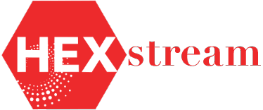OUUG Presentation Perspective: DERMS & AI—Powering the Future Grid Through Integration And Modernization
Earlier this year, our Utilities Industry Specialist Satish Saini joins Oracle Energy and Water Global Industry Specialist Tom Eyford for their OUUG presentation “DERMS and AI—Powering the Future Grid Through Integration and Modernization.”
Here we chat with Satish about that presentation, exploring the evolution of DERMS, overcoming integration challenges, and embracing AI among utility decision-makers. Take a look…
Q: What is the role of DERMS with the modern utility and how is it changing?
Satish: The recent United Nations climate-change conference, COP 28, addressed key directives related to DERMS, essentially doubling or tripling renewable penetration, clarifying reliability mandates, demanding commitments to net-zero targets, and addressing the intermittent nature of utilities’ adoption of distributed energy resources and the systems that manage them. DERMS are becoming increasingly mainstream, and this is changing how DERMS (and, in tandem, artificial intelligence, are enhancing grid reliability, optimizing energy distribution, and paving the way for a more sustainable and resilient energy future.
Q: What is the most common challenge with integration that you encounter?
Satish: Finding environments with the required T&D infrastructure; this is not always the case, and outdated T&D infrastructure curtails utilities’ abilities to implement proper integration programs. Inter-regional ties also complicate integration efforts, with each region dealing with different goals, different regulations, different budgets and timelines, etc.
Q: What are some of the solutions proposed to overcome these integration challenges?
Satish: Recent grid-optimization studies are providing great insight on how to do this properly. We will reference those studies during our OUUG presentation. There are many advance enablement programs being offered to utilities that meet the requirements for them. And cost-sharing initiatives widen the pool of eligible enterprises for widened integration efforts.
Q: Is there still reluctance to embrace AI among utility decision-makers?
Satish: There is. I have found that the best solution is to propose mixed / hybrid models in which there is a human interface with the AI technologies.
Q: What are you most excited about in this space?
Satish: There are exciting trends with storage, which I will explain during our OUUG presentation. And the whole concept of energy consumers becoming prosumers is attractive to both energy providers and their customers. We’ll discuss how to embrace this approach at OUUG.
WANT MORE WITH SATISH? CLICK HERE TO CONTACT US!
Let's get your data streamlined today!
Other Blogs
Five Keys to Keeping Your Cloud Optimized
The cloud can deliver extraordinary flexibility, scalability, and performance, which is why so many utilities are flying to the cloud. But while the c
Why Utilities Are Finally Flying to the Cloud
Despite unique industry challenges, utility organizations are increasingly adopting cloud-based infrastructure. In this blog, we focus on the specific
The ESG Movement for Utilities
“ESG-oriented investing has experienced a meteoric rise. Global sustainable investment now tops $30 trillion—up 68 percent since 2014 and tenfold sinc
